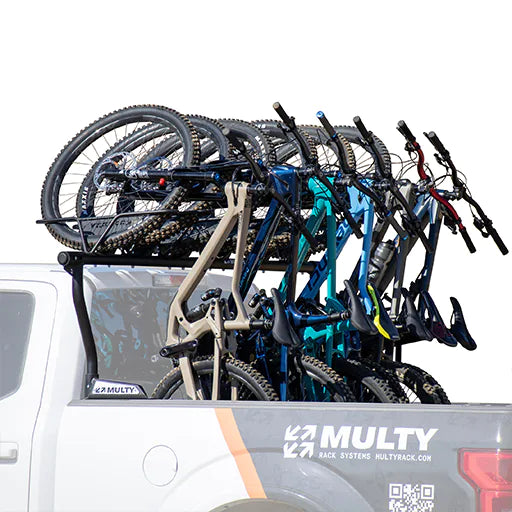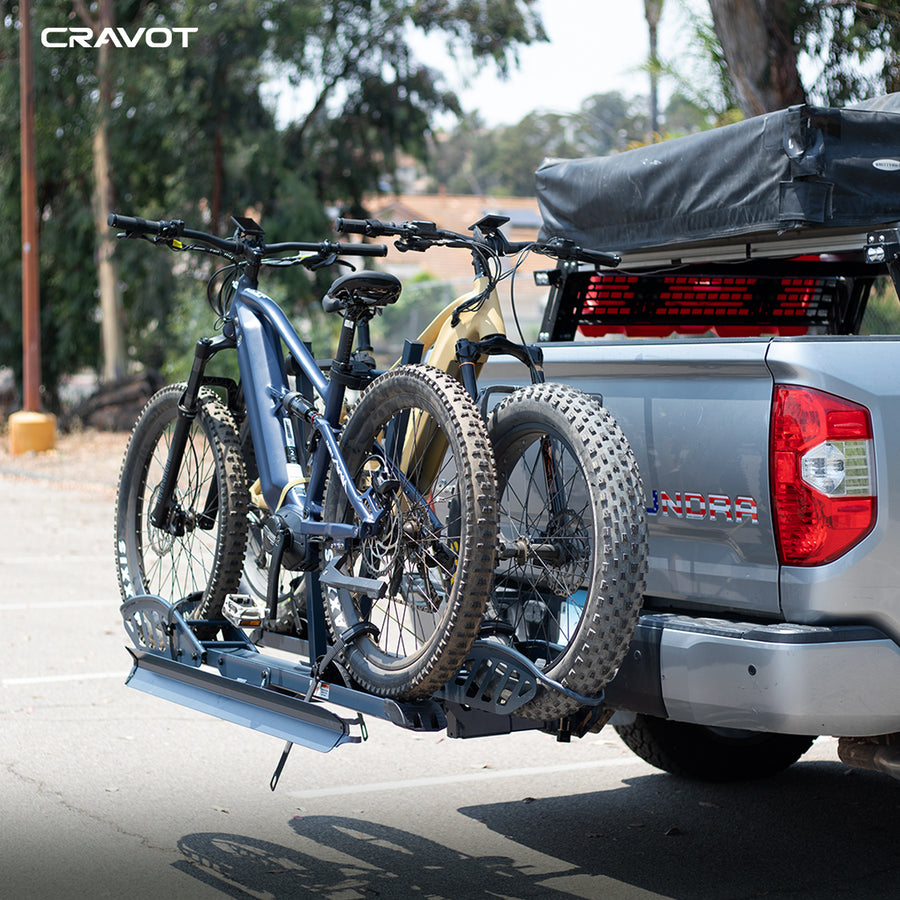Discover the Different Kinds of Bike Rack and Their Practical Applications for Biking Fanatics
The range of bike Racks readily available today accommodates the varied needs of cycling fanatics. From freestanding to wall-mounted alternatives, each style offers unique benefits for storage and transportation. Portable Racks additionally offer adaptability for those on the step. Picking the excellent kind requires cautious factor to consider of specific demands. Recognizing these aspects can make a significant distinction in both ease and safety for bicyclists. What are the essential factors to consider when choosing a bike shelf?
Comprehending Bike Rack Keys In
Numerous types of bike Racks satisfy the diverse requirements of bicyclists. Among the most usual are freestanding shelfs, often located in urban locations, which enable several bikes to be protected in a portable space. Wall-mounted Racks offer those with minimal flooring space, providing an effective service for home storage. In addition, mobile bike racks, created for convenience of transportation, appeal to bicyclists that regularly travel.

Hitch-Mounted Bike Racks
Hitch-mounted bike Racks provide a functional service for moving bikes, yet recognizing their installation process is vital for reliable use. Customers should additionally take into consideration the weight capability of these Racks to assure safety and security while traveling. Furthermore, compatibility with numerous lorry kinds plays a substantial duty in establishing the right shelf for private requirements.
Installment Refine Summary
When selecting a hitch-mounted bike shelf, comprehending the installation process is crucial for ensuring safety and ease. Initially, the individual must validate compatibility between the car and the rack's drawback receiver. The majority of Racks are designed for either 1.25-inch or 2-inch receivers. After picking the suitable rack, the installment begins with safeguarding the rack right into the hitch receiver and tightening up the drawback pin or screw to protect against movement. Proper placement is important to establish the rack does not block tail lights or license plates. As soon as installed, it is suggested to check for stability by applying minor stress to the shelf. Following the manufacturer's instructions will certainly ensure an effective installment, promoting a safe biking experience on the road.
Weight Capacity Considerations

Compatibility With Lorry Kind
Picking the right bike shelf includes verifying compatibility with different lorry types. Hitch-mounted bike Racks are developed to affix to the rear hitch receiver of a vehicle, making them ideal for a variety of trucks, vehicles, and suvs. It is vital to check the drawback course and weight ability to confirm an appropriate fit. Many hitch-mounted Racks are compatible with 1.25-inch and 2-inch receivers, fitting lorries geared up with suitable hauling capacities. Furthermore, customers ought to consider their lorry's elevation and design, as some Racks may block rear access or need extra clearance. Eventually, recognizing vehicle specs confirms that cycling fanatics can securely move their bikes without jeopardizing safety or performance.
Trunk-Mounted Bike Racks
Trunk-mounted bike Racks provide a practical remedy for cyclists looking for an effective way to deliver their bikes. Understanding the installation procedure is crucial for excellent usage, as improper arrangement can bring about safety issues. Furthermore, thinking about the weight capability of these Racks guarantees that they can safely hold the bikes without threat of damage or failure during transit.
Installment Refine Summary
Many cycling enthusiasts appreciate the comfort of trunk-mounted bike Racks for their convenience of usage and convenience. The installment procedure typically begins with unpacking the rack and acquainting oneself with its parts. Most Racks come with adjustable straps and hooks designed to protect them to the lorry's trunk or hatch. Users should validate the rack is positioned appropriately, aligning it with the automobile's shapes for security. Following the manufacturer's directions, the straps are after that tightened firmly, assuring a tight fit. It is very important to inspect that the shelf does not obstruct the vehicle's lights or permit plate. Verifying that all links are safe and secure prior to packing bikes is crucial for safe transportation. Proper installment improves both security and performance during cycling journeys.
Weight Ability Considerations
When thinking about a bike shelf for moving bicycles, weight ability is a crucial aspect that can not be ignored. Trunk-mounted bike Racks normally have weight limits that differ depending upon the model and design. It is vital for users to check these requirements to guarantee they do not surpass the recommended weight, as doing so can compromise both security and vehicle integrity. Most trunk-mounted Racks can sustain one or two bikes, with a mixed weight capacity varying from 70 to 120 extra pounds. Cyclists should additionally consider the weight of their E Bike Rack bikes, particularly if they own heavier models like electrical bikes. Correctly matching the shelf's weight ability with the bikes' weights guarantees a secure and safe transportation experience.
Roof-Mounted Bike Racks
Roof-mounted bike Racks offer a streamlined solution for delivering bikes, offering cyclists with the advantage of optimizing cargo room. These Racks are designed to hold bikes firmly atop the lorry, enabling for simple access to the rear of the car and protecting against blockages to the license plate or tail lights. They are suitable for people who often take a trip with their bikes, as they can fit various bicycle designs and sizes.
Installment generally includes attaching the rack to the lorry's crossbars, making certain a safe and stable fit. Roof-mounted Racks are typically aerodynamic and lightweight, which can bring about improved fuel performance compared to other types of racks. Individuals should think about the elevation of their lorry when filling and dumping bikes, as well as possible obstacles when going into garages or low-clearance locations - Bike Rack. In general, roof-mounted bike Racks offer a versatile and effective option for enthusiastic bicyclists on the move
Wall-Mounted Bike Racks
Wall-mounted bike Racks provide an efficient solution for cyclists looking for to optimize minimal room while safely storing their bikes. These Racks are excellent for metropolitan residents or those with tiny garages, as they elevate bikes off the ground and use upright space. Made from durable products, wall-mounted alternatives can suit different bike types, including road, hill, and hybrid bicycles.
Installation is straightforward, allowing individuals to install them in garages, basements, or also outside areas. Several styles enable one or several bikes, making them flexible for individual or family members usage. Additionally, some wall-mounted Racks included integrated locks or protection functions to discourage burglary, improving satisfaction for bikers.
Portable Bike Racks
Mobile bike Racks provide cyclists a flexible and hassle-free service for transferring their bicycles. These Racks are designed for very easy installation and elimination, making them perfect for those that need to frequently switch over between places or vehicles. Portable and generally light-weight, portable bike Racks can be conveniently kept in a trunk or garage, alleviating the problem of irreversible installations.
There are different kinds of portable bike shelfs, consisting of hitch-mounted, trunk-mounted, and roof-mounted options, each satisfying various vehicle types and cyclist choices. Hitch-mounted Racks supply security and accessibility, while trunk-mounted Racks are frequently more budget-friendly and flexible. Roof-mounted Racks are excellent for optimizing freight space but may require some lifting.
Picking the Right Bike Shelf for Your Demands
How can one identify the very best bike shelf to suit their particular cycling requirements? Determining the appropriate bike rack includes evaluating several elements. First, one need to think about the sort of car used for transportation, as Racks are created for different mounting systems, such as roof covering, trunk, or drawback. Next, the number of bikes to be brought is important; some Racks accommodate just one, while others can hold several bikes efficiently. Furthermore, determining the weight and frame design of the bikes is considerable, as specific Racks are better fit for much heavier or distinctively designed bikes. Finally, designated use needs to be thought about; frequent vacationers may choose a more mobile choice, while periodic customers could focus on simplicity and ease of setup. By carefully evaluating these factors to consider, people can pick a bike rack that meets their demands and improves their biking experience.

Often Asked Questions
Can Bike Racks Accommodate Different Bike Sizes and Styles?
Bike Racks vary in design, making it possible for lodging for different bike dimensions and styles. Some Racks feature flexible elements, while others are especially customized for sure bicycles, making sure secure storage and very easy ease of access no matter the bike's specifications.
Exactly how Do I Correctly Protect My Bike on a Rack?
To correctly safeguard a bike on a rack, one ought to ensure the frame and wheels are firmly secured utilizing locks or straps, looking for security and protecting against movement during transport to prevent damages.
Are Bike Racks Easy to Remove and mount?
Bike Racks vary in installation complexity, but many are designed for user-friendliness. Detachable versions typically offer straightforward configuration and removal, while irreversible setups might need tools and more time, depending on the specific design.

What Products Are Bike Racks Normally Made From?
Bike Racks are normally made from materials such as plastic, aluminum, and steel. Bike Rack. Steel provides sturdiness and toughness, while aluminum supplies lightweight portability. Plastic choices are frequently created for convenience of usage and affordability
Do Bike Racks Affect Gas Efficiency When Driving?
When driving is substantial, the inquiry of whether bike Racks influence gas performance. Studies suggest that bike Racks can increase aerodynamic drag, possibly leading to lowered fuel efficiency, especially at greater rates or with extra weight.
After choosing the suitable shelf, the installment starts with safeguarding the shelf right into the drawback receiver and tightening up the drawback pin or bolt to protect against movement. Roof-mounted Racks are lightweight and frequently aerodynamic, which can lead to enhanced fuel efficiency contrasted to various other types of shelfs. Hitch-mounted Racks provide stability and accessibility, while trunk-mounted Racks are frequently a lot more flexible and budget-friendly. Next off, the number of bikes to be lugged is important; some Racks accommodate just one, while others can hold multiple bikes successfully. Bike Racks vary in style, making it possible for lodging for different bike dimensions and styles.